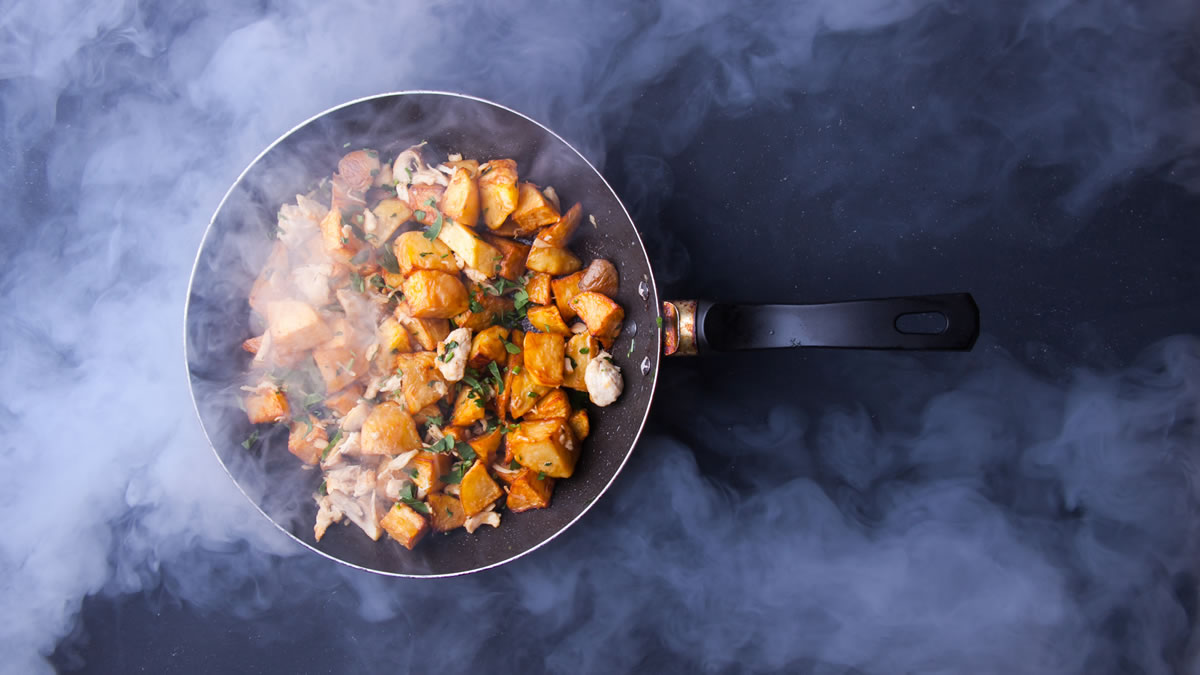
Non-stick cookware has become a widely used and appreciated type of cookware because it is easy to use and helps reduce the amount of time spent cleaning up after cooking. However, some people are concerned that this type of cookware may be harmful to our health. Let’s explore the potential dangers of using non-stick cookware, find out if it’s really worth the risk and how you can minimize the harmfulness.
Why Non-Stick Cookware Is A Popular Choice?
Non-stick cookware is popular because it is easy to use. When cooking with non-stick cookware, food doesn’t stick to the pan and therefore doesn’t require as much oil or butter for lubrication, which helps reduce the amount of time spent cleaning up after cooking. In addition, non-stick coatings are heat resistant and can be used at high temperatures without burning.
The Dangers Of Using Non-Stick Cookware
The potential dangers of using non-stick cookware have been a topic of concern for some time. Some people worry that the chemicals in the non-stick coating may be harmful to our health. These chemicals include perfluorooctanoic acid (PFOA) and polytetrafluoroethylene (PTFE).
What are PFOA and PTFE?
PFOA and PTFE are two chemicals that are used in the production of non-stick coatings. PFOA is a chemical that has been linked to health problems such as cancer, thyroid problems, reproductive problems and high cholesterol. PTFE is a chemical that can release toxins when it is burned.
While some evidence suggests a link between PFOA and these health concerns, more research is needed to determine whether or not PFOA is truly harmful.
Is It Really Worth The Risk?
While some evidence suggests a link between PFOA and health concerns, more research is needed to determine whether or not PFOA is truly harmful. Until more is known, it’s hard to say for sure whether using non-stick cookware is worth the risk.
If you are concerned about the potentially harmful effects of using non-stick cookware, there are a number of things you can do to reduce your exposure.
How To Reduce The Harmful Effects Of Non-Stick Cookware
If you are using non-stick cookware, there are a few things you can do to reduce the potentially harmful effects:
- Don’t use high heat settings, as this can increase the risk of the coating breaking down and releasing harmful chemicals into the air.
- Avoid cooking with non-stick cookware when it is scratched or damaged, as this can also increase the risk of chemicals being released.
- Make sure to properly ventilate your kitchen when cooking with non-stick cookware, as fumes from the coating can be harmful.
- Wash your hands thoroughly after handling non-stick cookware, and avoid contact with your eyes.
- Avoid cooking fatty foods on non-stick cookware, as this can increase the risk of the coating breaking down.
- Discard any non-stick cookware that is chipped or peeling.
What’s Are The Alternative Cookware?
The alternative to using non-stick cookware is using traditional cookware that is coated with a material such as stainless steel (related read – Stainless Steel Vs Non-Stick Pans), copper or aluminium. While these materials may be less non-stick, they are not linked to the same health concerns as PFOA and PTFE. In addition, traditional cookware can be seasoned with oil or butter to create a non-stick surface.
Conclusion
Non-stick cookware has become a popular choice for both amateur and professional chefs because it is easy to use and helps reduce the amount of time spent cleaning. However, there is some concern that this type of cookware may be harmful to our health. While more research is needed to determine if PFOA, a chemical in the non-stick coating, is truly harmful, there are a number of things you can do to reduce your exposure. So, is non-stick cookware safe? The jury is still out on that one, but it’s best to take some precautions in the meantime.
Last Updated on
- Features to look for in an exhaust fan - September 26, 2022
- How to calculate CFM for exhaust fan - September 24, 2022
- Kitchen Fan Installation – Everything You Need to Know - September 20, 2022
